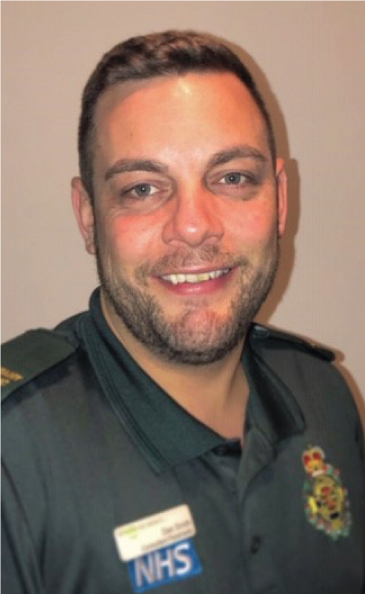
It is with a heavy heart that I write this last column for the Journal of Paramedic Practice. My 12-month dabble at being a columnist has flown—it feels like yesterday that I nervously reviewed the first edition! My objective was to expose the mystery of consultant paramedics, and share my thoughts and working life. I hope my monthly ramblings have achieved that.
For this final instalment, I wanted to share some recent thoughts on fear—not the adrenaline-fuelled exhilaration we seek from rollercoasters or skydiving. Instead, the subtle, ever-present, damaging fear that stubbornly continues as some form of horrendous improvement methodology.
Fear is without doubt used to a lesser extent nowadays; we are improving but seem unable to eradicate it completely. When I engage in conversation on the subject, I hear claims of ‘helpful fear’ and I fundamentally disagree. Caution, yes; measured, shared and appropriately considered decision making, yes; but decisions founded on fear is destructive for the decision itself, and for the person making it.
Organisations are addressing this, in part, through ‘just’ or ‘no-blame’ schemes. Admirable steps that address the very overt fear styles employed by managers of the past (I hope), but that only takes us so far. To evolve from scheme to genuine culture, we have to address the hidden fear that can be skilfully blended into lectures, conversations, tales of the past, language and reactions to situations. Persistent, stubborn and unrelenting, the subtle suggestion of the need for fear can be far reaching and dangerous.
We have all heard the story; ‘I know this poor paramedic who stood in the cold, lonely dock (there are no docks in a coroner's court), being “torn apart” for hours by a coroner for a minor thing’. The tale is as famous in our circles as Santa Claus himself and similarly, the story grabs you when you are young and naïve and it takes some effort to rid yourself of it—but what if it is true?
The reality has been, for me at least, extremely different. I appreciate some will have had a difficult experience in court, but the tales that develop are often incomplete, embellished and, like any good tale, adapted to the needs of the day. In a court appearance, we are often simply required to reflect, discuss improvement and excellence where applicable, and discuss the care we provide openly and transparently. All clinicians should be doing that on an almost daily basis; the difference in a courtroom is that it is a little more public than we are used to. That is the uncomfortable part; not the process but the setting.
My role requires me to spend more time in court than most and I am usually there because the coroner is raising concern about an aspect of care. I have had to represent my Trust, my profession and myself, in some really difficult and distressing cases, where care has been well below expected practice. But not once has a coroner ‘done’ me, like I was once warned could happen. I have never been shouted at, ‘torn apart for hours’, or met a coroner who behaves like that in the tale of the poor paramedic!
In the main, the coroner, like you, just wants to make sure that care is the best it can be, so why do we fear them? The last few weeks have reminded me that while the fear approach to improvement is alive and well, it is increasingly disguised, which is probably more harmful than the openness of the past.
This time of year is filled with welcoming new arrivals to the profession. It is always a pleasure to meet them and I often try to cultivate a conversation about anxieties. It was during one of those sessions that I was saddened to hear about a fear—bordering on a phobia—of the coroner! A phobia, by definition should be extreme or irrational; in this case, it surely seemed to be and I thought there was perhaps an element of the unknown. But alas, it became clear that it was not irrational, as the person did have experience and knowledge gained from 2 years of threats: small, innocuous comments which built up over time. Scenarios, going wrong would be met with a threat of the coroner. Paperwork completed incorrectly, met with the threat of the coroner. Slowly chipping away at them, until the day they met a lead paramedic, welcoming them to the profession, one of the biggest concerns they had was living for real, the story of the poor paramedic. The fear was real and has to stop.
It is my role, to review incidents of note, and what I have found and what I believe more than anything else, is that when things do go wrong, expect a review, expect challenge, but also expect respect, balance and support. We can not, and must not, live in fear; and changing that culture is a huge part of my role as a leader. We all come to work wanting to do a good job and when something doesn't go quite according to plan, my job is to make sure these situations are handled with care. Fear in a workplace, is dangerous. We must all work together to eradicate it, but I do mean all of us. Repeating the tales and compounding the fear must not continue—so this Christmas, tell the Santa tale, sell the mystery, but if you catch yourself, or someone else, starting the ‘poor paramedic’ tale, stop them. We will all benefit from this in the future.

